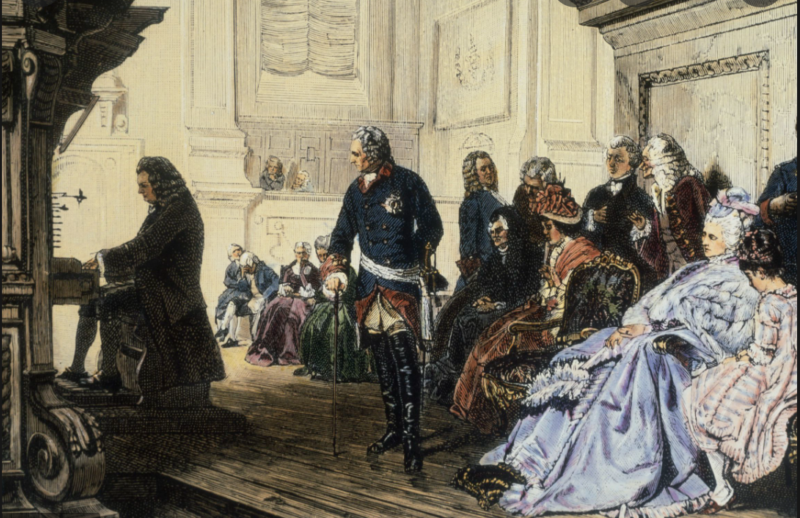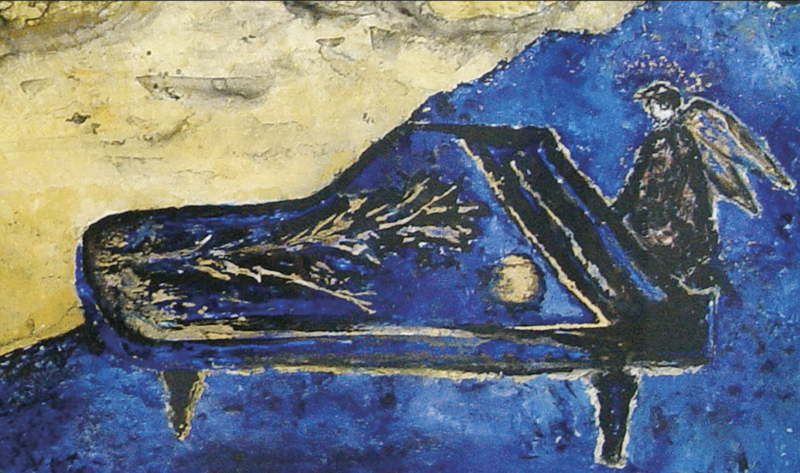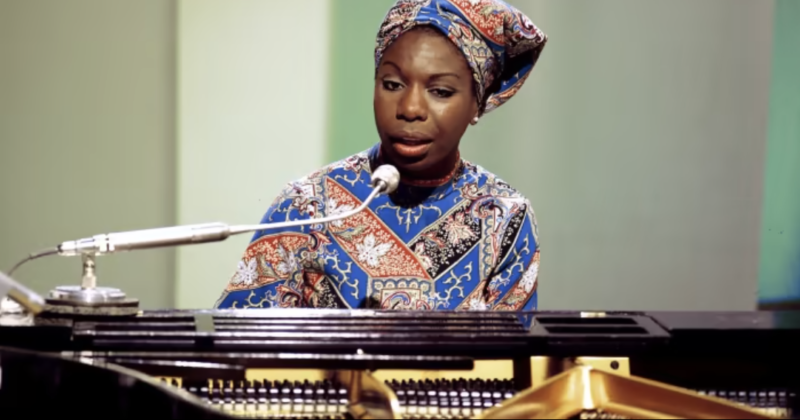Moderate
A list

Heller ~ Prelude in C sharp minor (A1) Although it goes at a fairly quick tempo, this should not be difficult to learn - if you know your scales! There is a lot of repetition of material. It is important to cultivate freedom of movement so that the various semiquaver patterns are comfortably encompassed through changes in the shape and angle of the hand in places such as the descending patterns on page 5.
A piece that sounds familiar, that reminds us of Mozart is Kuhlau ~ Allegro (A3). As you can see, the style is almost identical. Knowledge and ease of playing scale patterns is a must and if you have a twinkle in your eye, then that will go a long way towards capturing the humour and character here.
Cimarosa ~ Allegro (A7) provides an opportunity to learn a relatively showy piece, and one with plenty of Classical poise. Although he is best known as an operatic composer, Cimarosa's keyboard writing brings out a certain charm and one can easily imagine the different characters in the opera making their various appearances on stage
Schubert ~ Moment musicaux in F minor (A12) will suit a certain musical personality. Capturing the nuances of phrasing might sometimes feel a little elusive. It's easy enough to play the piece, once known; of course, the perpetual question is how? Andras Schiff has some illumination to give:
_____________________________
B list

Dett ~ Honey (B1). One cannot help but ask, what kind of honey? What particularly fragrant variety is this? It seems like one with meadow flowers, swaying grasses in the gentle breeze. There is nothing static about this piece. Whilst that is not the composer's meaning, where 'honey' was the more mundane reference often used as a term of endearment, the performer is nonetheless left to interpret the piece in a suitable way.
Here are some extracts from a rather more apicultural perspective played by Peter Noke!
The gentle shimmering textures, which fall as rain through Glière ~Prelude in Db (B6) come easily enough once you've got the chord sequence in your head. The pedalling is not complicated but, like all pedalling, needs to be changed effectively.
Hartmann ~ Nocturne (B7) also shimmers, but with a very different kind of texture, one which is rather more challenging than the writing seen in Gliere's Prelude. The middle texture of swirling semiquavers gives a certain warmth and momentum to the music, helping to propel the line forwards and providing moments of musical interest along the way. Most of this would be played with the right hand. The upper lyrical lines need to be well projected and sustained in the pedal, ensuring that the semiquaver flow is as quiet as possible.
Stephen Hough ~ Little Lullaby (B8) is a rich tapestry of musical ideas interwoven with various moments of imitation. Learn more about teaching this piece here:
Howells ~ There Was a Most Beautiful Lady (B9) shows Howell's pastoral, quintessentially English character to the full. Its wistful, reflective atmosphere should feel like a spring breeze across your face. Nothing too solid here - all is in the imagination as the memories flood in, the gentle vibrancy of spring colour excites the senses and, hidden away where you least expect it, is that moment of magical harmony that will linger in the memory long after the instant has passed.
Richard Uttley (ABRSM)
Khachaturian ~ Legend (B10) is a chromatic exploration through some of the more turbulent childhood emotions, its more pleading moments turning swiftly to more reflective ones, although underpinning the journey is a sense of angst.
Mel Bonis ~ Interlude (B11) is a lengthy piece with plenty of interesting and expressive writing, changing harmonic scenes, often in pastoral vein.
Guastavino ~ Cantilena No. 1 (B12). Like a good bottle of red Argentinian wine, Gustavino's music is described as 'tonal and lush'. Marcus Madrigal plays with insight and understated passion.
...And if you still have that opened bottle, why not sit down and enjoy more of Guastavino's music here (3 Romances for two pianos):
_____________________________
C list

Bennett ~ The Child that is Born on the Sabbath Day (C1). There's no mistaking the bountiful energy this young child has, dancing cartwheels across the garden and, following a moment of reflection, jumping as high as possible before a final helter-skelter down the slide.
Richard Rodney Bennett's own performance brims with that childlike excitement:
Bernstein ~ For Stephen Sondheim (C4) is a bitter-sweet harmonic tribute to the great man. It flows along in stops and starts, pausing momentarily to recall those special memories.
Casella ~ Galop Final (C5) Out with the toy box - tip them on the floor and off we go! The bright left hand ostinato propels the music forwards whilst dancing, skipping and galloping along. A bright smattering of dazzling C major colours splat onto the canvas, as the final chord clusters hit the listener in a cascade of carnival fun.
Richard Uttley (ABRSM)
Ben Crosland ~ View from a Window (C6) looks out on the landscape of a gently purring groove which develops through some chromatic harmonies into a more complex textural picture before recapitulating to its satisfying conclusion.
Paul Harvey ~ Rumba Toccata (C7) is a welcome reincarnation from an older syllabus. It's a great miniature with its simple, yet exciting, single lines. The technical challenges are to keep those semiquavers tautly on track with a brightly articulated staccato touch, while paying careful attention to all the dynamic indications of the score to achieve a buoyant musical result that is so satisfying.
Nikki Iles ~ East Coast Blues (8). That summer day when we met in the park! Not a care in the world. We felt so cool, so good to be ourselves and out there in the world of musical sunshine. Capturing every nuance of the score may take a little while but, undoubtedly, the road to that success lies in listening to the way the composer plays and communicates the mood, with its understated walking bass, right from the outset:
Prokofiev ~ Cortège de sauterelles (C10) is a bright bit of fun. The grasshoppers don't hang around. They're here one moment, gone the next.
Nkeiru Okoye ~ Dancing Barefoot in the Rain (C11) The joy in welcoming relief from the long drought is celebrated here in 5/8 metre, which gives the mood a light-footed gaiety with a particular appeal.
Paul Ruders ~ Shooting Stars (C12) is an effectively written piece. It may take a little while to get one's head around the patterns when putting hands together, although once done it is then easy enough to focus on the consistency of the articulation. The changing textures and dynamics make for interesting colouristic effects.
Billy Taylor ~ I wish I knew how it would feel to be free arr. Churchill (C13) is a great opportunity to get to learn and play a favourite jazz tune in a way that might lead you to discover new ways of learning, especially should you throw the traditional methods aside and opt to trust the instincts and guidance of a truly great teacher, Pete Churchill. Give it a go!
_____________________________
Other content in “Grade 6”
-
Current: Moderate
